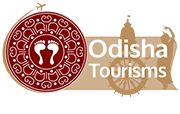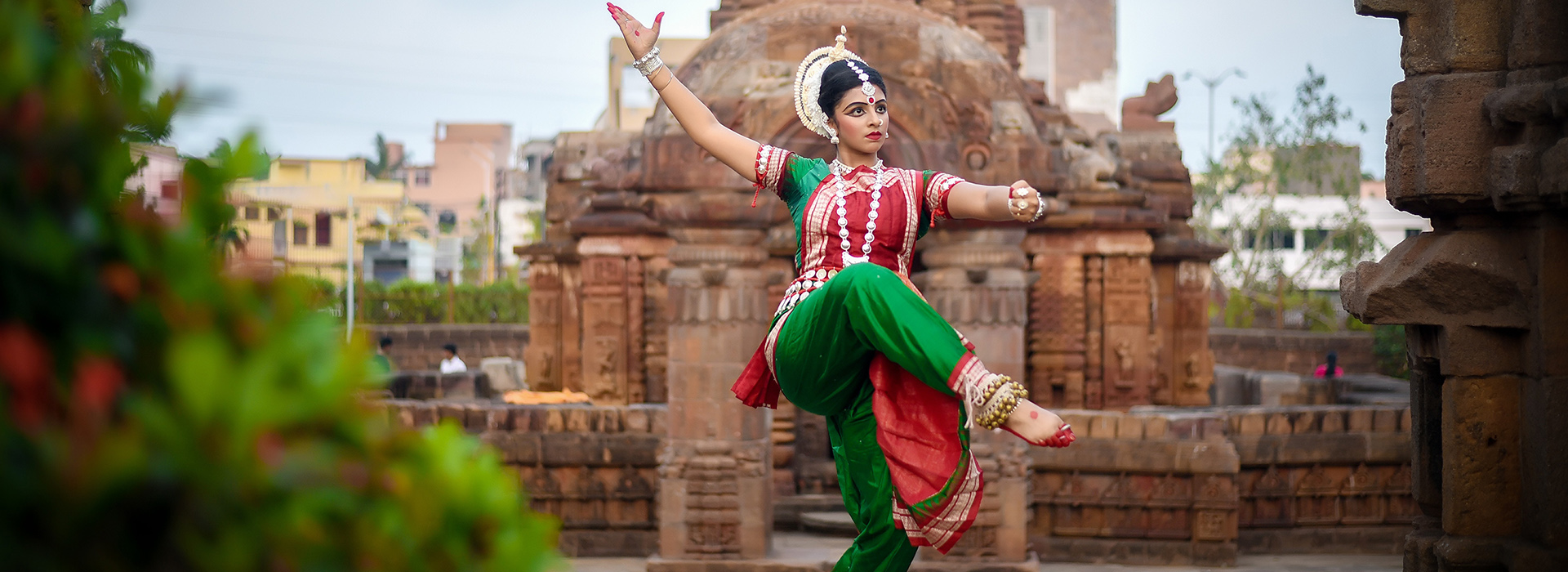Dance Name: Gotipua
History & Symbolism : Long ago, the temples in Orissa had female dancers known as ” this devadasis used to stay unmarried to entertain God” (or mahari), who were devoted to jagannath.which gave rise to Mahari dance. Sculptures of dancers on bas-reliefs in temples in Orissa (and the Konark Sun and Jagannath Temples in Puri) demonstrate this ancient tradition. With the decline of mahari dancers around the 16th century during the reign of Rama Chandra Dev (who founded the Bhoi dynasty), boy dancers in Orissa continued the tradition.
Sources of Inspiration : It celebrates the existence in full acceptance of all possibilities of sex, gender and self.
Local Presence : Khurda
Dance Attire: Kanchula, Nibibandha
Musical Instruments : Mardala , Gini, harmonium, Violin, Reed organ, Bansuri
Interesting Facts : Male dancers with female costumes .
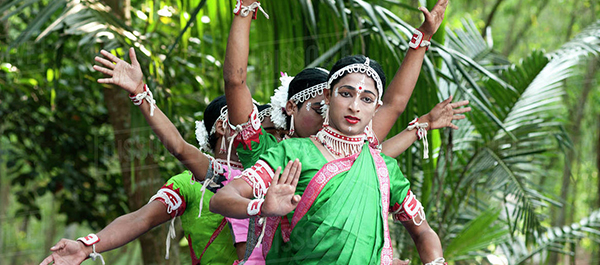
Dance Name: Ghumura
History & Symbolism : The name of the dance form has been derived from an instrument -the ghumura naat -a particular kind of drum which is played during the dance.
Sources of Inspiration : There are dances beginning from merry-making to martial activities and there are folk plays depicting various episodes from mythology, history and legend, which inspire the people and help to keep up their morale.
Local Presence : Kalahandi
Dance Attire: Silk Dress ,Dhoti and Ornaments.
Musical Instruments : Nishan, Dhol, Taal and Madal
Interesting Facts : Dress code of Ghumura resembles more like a tribal dance.
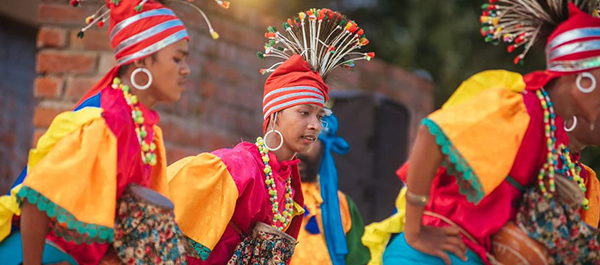
Dance Name: Chhau
History & Symbolism : Chhau is an ancient dance form. It originated in the mock fights of the Oriya Paikas (warriors) who fought rhythmically to the accompaniment of indigenous musical instruments.
Sources of Inspiration :The movements of the mask indicate anger whereas those of the shoulder and chest indicate joy, depression and courage. Another gesture is jumping in the air which serves an attack during the enactment of a war scene.
Local Presence : Mayurbhanj
Dance Attire: Dhotis, Kurta , Colorful Sarees ,Mask and Jewelry .
Musical Instruments :Dhol, Nisan, Tamki, Tasa and Mahuri.
Interesting Facts : Chhau dance draws inspiration from martial arts, mock combat, semi-classical dance, acrobatics, athletics and story-telling.
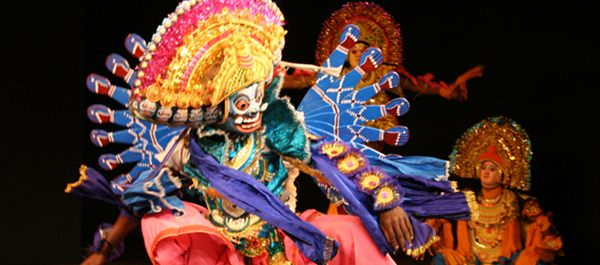
Dance Name: Sambalpuri
History & Symbolism : Sambalpuri Dance is the Most famous Folk Dance of Western Odisha . Dances originating from the Villages are known as Folk Dance. The People residing in the Villages grow up since Birth , Passing Childhood, Youth and old age in interaction with the mountains, streams , forests, animals, birth , life , happiness etc.
Sources of Inspiration : the performance of this dance was to propitiate the gods, to fight against evil, and to pacify the invisible tiny atman (soul).
Local Presence : Sambalpur
Dance Attire: Khadi cloth, Sambalpuri hawaii shirt, towel for men and Sari , blouse, Ornaments for female.
Musical Instruments :: Dhol , Nishan , Muhuri, Tasa , flute
Interesting Facts :: The songs and performances of this form comprise of the typical touch of tribal and rural culture.
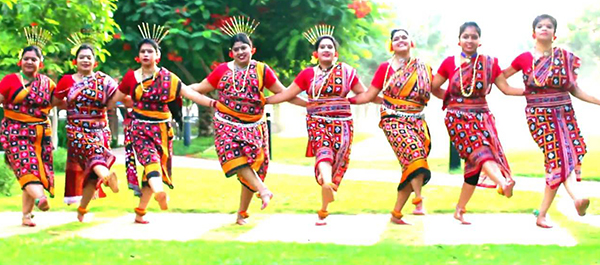
Dance Name: Dalkhai
History & Symbolism : :Dalkhai is the most popular folk dance of Odisha. It is known as Dalkhai because in the beginning the word is used as an address to a girl friend. Mainly the theme of this dance is Radha and Krishna. Ramayana , Mahabharata etc. In this dance The men dancing along with the girls address them during the performance and flirt with them.
Sources of Inspiration : it helps to know the people about eternal love story of Radha and Lord Krishna and episodes from the Hindu epics, Ramayana and Mahabharata and description of nature.
dalkhai
Local Presence : Sambalpur
Dance Attire:Ambalpuri Saree, Scarf and Jewellery .
Musical Instruments :: Dhol, Nisan, Tamki, Tasa and Mahuri.
Interesting Facts :: The Dalkhai dance is performed on festive occasions such as Bhaijuntia, Phagun Puni, Nuakhai, Dussehra, Dalkhai and Durga Puja. The unmarried young women known as ‘Kuanris’, start the performance with a folk song, which is followed by the Dalkhai dance.
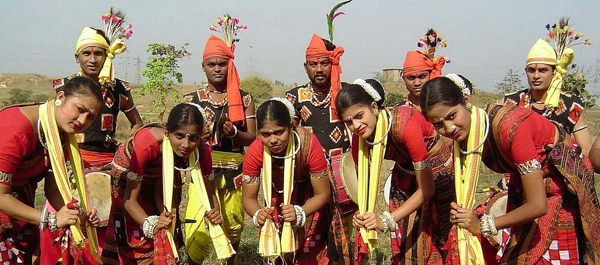
Dance Name: Paika
History & Symbolism : It is said that this type of dance form was performed by the people known as Paikas in ancient times. Paikas were the group of peoples or soldiers who served their lives for the safety of the kingdom. This is the main reason why this dance forms known .
Sources of Inspiration : The main target of this dance is to enhance the physical excitement and to develop the inner courage.
Local Presence : Mayurbhanj
Dance Attire: Colourful turbans and tight dhotis.
Musical Instruments :Narsingha, shehnai, Bheir and the Dhak and Nagara drums.
Interesting Facts : In olden days, the powerful Ganga and Gajapati rulers of Orissa extended their territory borders from the Ganga River in the north to Godavari in the south with the help of a vast army of valiant Paikas, for which, these received huge land grants from the kings.
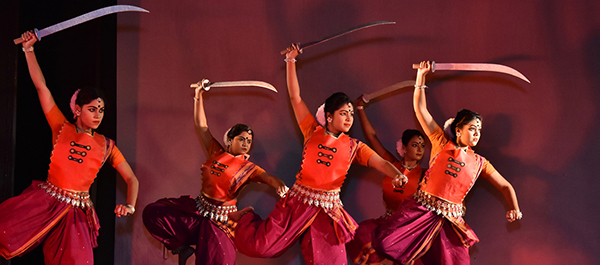
Dance Name: Ranapa
History & Symbolism : : Ranapa literally means a stilt is the main attraction in this folk dance. The dance on the stilts is prevalent among the cowherd communities of south Odisha. The young village dancers standing on the stilts, dance with at most ease to the accompaniment of Dhol and Mahuri.
Sources of Inspiration : The dancers exhibit their skills in balancing on stilts.
Local Presence : Ganjam
Dance Attire: Dhotis, Kurta , Colorful Sarees ,Mask and Jewelry .
Musical Instruments :Chagi, Nagar, Dhamsa, Mahuri and large
cymbals .
Interesting Facts : The stunts performed are thrilling that bring joy but increase in heart-beats. The young dancers stand on the bamboo stilts and dance to the accompaniment of music and song without losing balance.
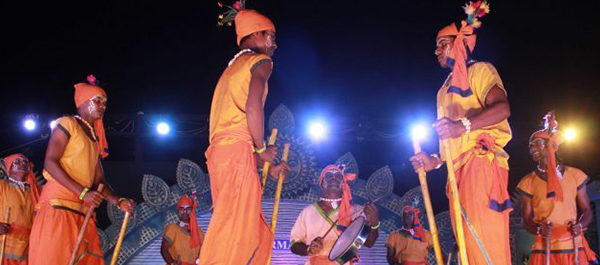
Dance Name:Chaiti Ghoda
History & Symbolism : There is a story when lord rama crossed the river with the help of aboriginal Keot fishermen and in return lord rama given a horse to the fishermen. This dance specially performed by aboriginal fishermen tribes like the Keot(Kaibarta) .
Sources of Inspiration : It is celebrated to take the blessings of the deity of this ethinic group.
Local Presence : Cuttack
Dance Attire:Dhoti, Kurta ,Pagdi for men and Saree Blouse ,Ornaments for women.
Musical Instruments : Dhola and Mahuri
Interesting Facts :A well-decorated horse head is attached to the trunk built of bamboos and beautifully decorated by sarees . A man enters through the hole kept for the purpose behind its neck. He holds the reins of the horse and dances.
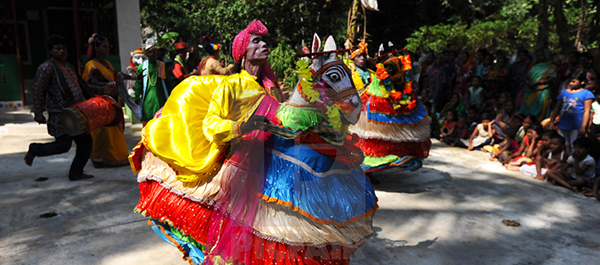
Dance Name: Kela Keluni
History & Symbolism : : The ‘Kelas’ are a nomadic class of people in Odisha. . Except for a few months in the year they mostly remain out of their homes. Originally they are snake charmers and bird-catchers, who roam about the countryside to earn their livelihood. Besides, they also display tightrope walking and other varieties of gymnastic events along with dance and songs.
Sources of Inspiration : managing capacity to survive
Local Presence : Khurda
Dance Attire: Kurta , Pyjamas for men colorfull saree and ornaments for women.
Musical Instrument :Ghuduki (a string instrument )
Interesting Facts :The dance of the Keluni is fast with swaying movements of legs, hips and the head
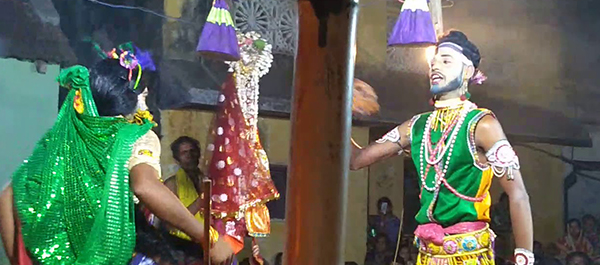
Dance Name: Changu
History & Symbolism : The Changu dance gets its name from the Changu drum which is the primary and mandatory musical accompaniment for the dances. The dance is performed only by the unmarried men and women of the village in groups that have distinct roles in the Changu performances. The dance is performed at the centre courtyard of the village, the women dance slowly while the men only provide the accompanying music and sometimes perform acrobatic feats.
Sources of Inspiration : joy in living
Local Presence : Anugul , Sundergarh, Keonjhar, Mayurbhanj & Phulbani
Dance Attire: Paijama and Shirt for men. Long saris for women.
Musical Instruments : Changu , Dhol
Interesting Facts :: The Changu dance also serves as a socially acceptable platform for the meeting of eligible bachelors in the village, since the dancers have to be strictly unmarried.
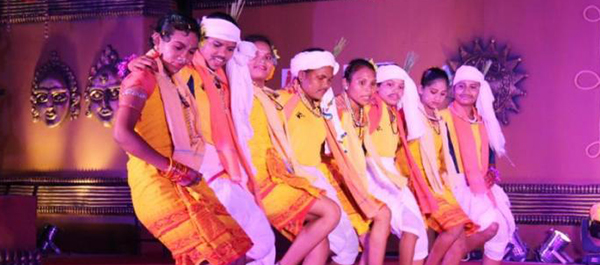
Dance Name: Karma
History & Symbolism : Karam or Karma literally means ‘fate’. This pastoral dance is performed during the worship of the God or Goddess of fate (Karam Devta or Karamsani Devi), whom the people consider the cause of good and bad fortune.
Sources of Inspiration : Description of nature, desires, aspiration of people, love and humour.
Local Presence : Mayurbhanj, Sundargarh, Sambalpur and Dhenkanal.
Dance Attire: The dancers have no special costume for the occasion.
Musical Instruments :Thumki, Chhalla, Payri and Jhumki
Interesting Facts :The tribal group presents this folk dance in front of Karam tree that symbolises the KaramDevta .

